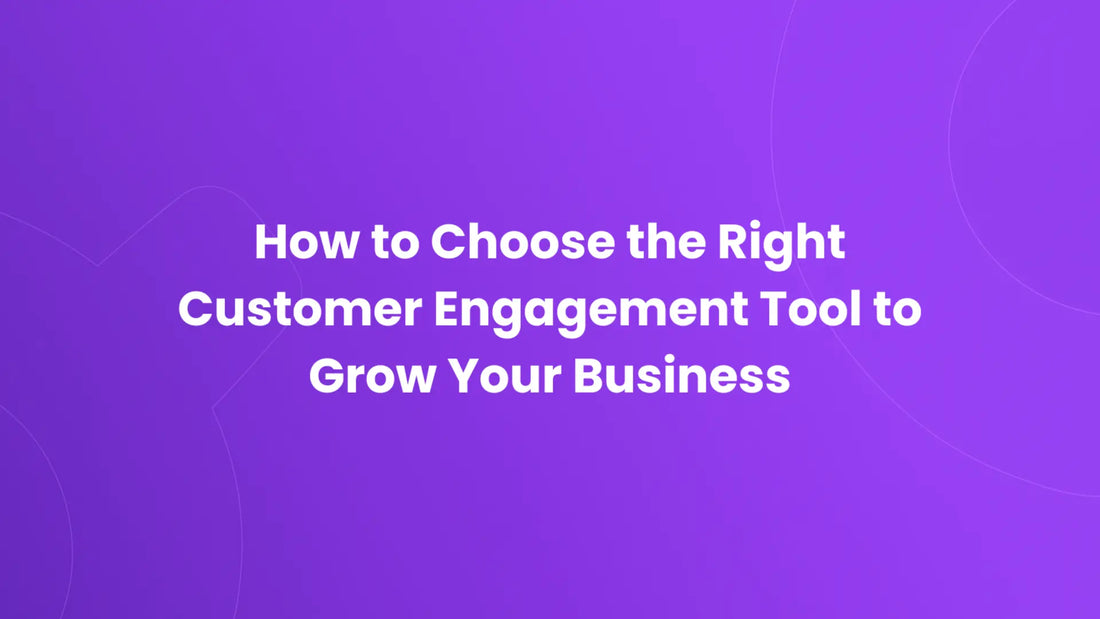Keeping customers engaged has never been more important. Businesses today compete not only on price and product quality but also on how well they connect with their audience. That’s where the right tool comes in. Choosing an effective customer engagement solution can help you build stronger relationships, improve satisfaction, and increase loyalty. But with so many options available, how do you know which one is right for your business?
This guide will walk you through the process of evaluating tools, highlight the benefits of modern technology, and explain why an AI customer engagement platform may be the solution you need to grow.
Why Customer Engagement Tools Matter
Customer engagement tools are designed to help businesses connect with their audience in meaningful ways. They allow companies to communicate consistently, personalise interactions, and deliver better service. When done well, engagement leads to stronger trust and repeat business.
Without the right systems in place, communication can feel disjointed. Customers may struggle to find answers quickly, or they might not feel valued after a purchase. That lack of attention can cause them to look elsewhere. On the other hand, using an advanced AI customer engagement software solution helps streamline responses and maintain relationships at scale.
The right tool also provides insight into customer behaviour. Tracking preferences, habits, and feedback helps companies adjust strategies quickly. That kind of data-driven decision-making is key to staying competitive.
Key Features to Look for in an Engagement Tool
Not all tools are built the same. Some focus on messaging, while others emphasise analytics or automation. Choosing one that matches your business goals is essential. Start by looking for these features:
-
Automation – A good tool saves time. Automated responses, triggered actions, and smart workflows ensure customers don’t wait too long for support.
-
Personalisation – Customers expect tailored experiences. Look for software that uses data to customize interactions.
-
Multi-channel communication – Your audience might prefer email, chat, or social media. A flexible system keeps everything in one place.
-
Analytics and reporting – Data shows what works. Tools that provide insights help you refine engagement strategies.
Many modern platforms combine these features into complete AI customer engagement solutions. With machine learning and predictive analytics, businesses can move from reactive support to proactive engagement.
The Role of AI in Customer Engagement
Artificial intelligence has transformed how businesses interact with customers. Instead of relying on manual processes, companies now use smart systems to manage large volumes of interactions. An AI customer engagement platform can answer common questions instantly, recommend products, and even predict customer needs.
The benefit is twofold. Customers enjoy faster service, and businesses save time and resources. AI also makes it possible to scale personalisation. Whether you’re a small business or a growing enterprise, you can treat every customer like a VIP.
Another strength of AI-driven systems is continuous learning. The more the platform interacts, the better it gets at predicting behaviour. Over time, this leads to improved recommendations, stronger retention, and higher lifetime value.
Matching the Tool to Your Business Goals
Before choosing a tool, think about your priorities. Do you want to reduce support response times? Are you focused on increasing sales conversions? Or is your goal to improve retention? The answers will guide your choice.
For example, if your main concern is customer support, a solution with strong automation and live chat might be best. If sales growth is the target, choose a system with recommendation engines and personalised outreach. And if you want to build long-term loyalty, a comprehensive AI customer engagement software package that combines analytics with communication tools can help.
The key is alignment. The best tool is the one that works with your existing processes while solving your biggest challenges.
Evaluating Providers and Platforms
Once you know what you need, it’s time to compare providers. Look beyond marketing claims and focus on performance. Consider these factors:
-
Ease of use – If the platform is complicated, your team won’t use it effectively.
-
Integration – Make sure it works with your existing CRM, email system, and sales tools.
-
Scalability – As your business grows, the system should handle more data and interactions without slowing down.
-
Support – Reliable customer service from the provider ensures smooth implementation.
Reading reviews and case studies can also help. Look for companies similar to yours that have benefited from the platform. That will give you a clearer picture of what to expect.
Building a Long-Term Engagement Strategy
Buying a tool is just the first step. To see real results, you need a long-term strategy. Set clear goals, train your team, and regularly review performance. Customer needs change, and your approach should evolve with them.
The strongest strategies combine human connection with technology. While an AI customer engagement platform handles repetitive tasks, your team can focus on building deeper relationships. This balance ensures customers feel valued on every level.
Finally, monitor progress using the analytics features within your chosen solution. Regular reporting will show what works and where adjustments are needed. With time, this approach helps create a cycle of continuous improvement.
Final Thoughts
Choosing the right customer engagement tool is one of the most impactful decisions you can make for your business. The right system helps you respond faster, personalise experiences, and build loyalty that lasts.
Investing in AI customer engagement solutions gives you the advantage of automation, data insights, and scalable growth. When carefully matched to your business goals, these platforms do more than improve engagement. They become a foundation for long-term success.
